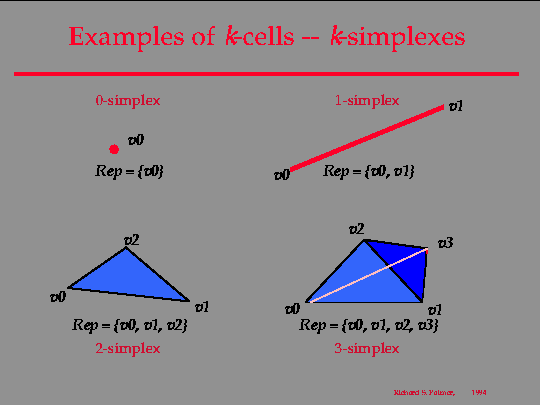
Here we see some examples of cells. In this case, we have the simplexes, which are defined by convex combinations of vertices. To begin with, we define the notion of a vertex, or abstract point. (A vertex need not be embedded in space, i. e. , it need not have any position. ) Let us define a vertex to be any element of some given set V, which could have any type. For simplicity, let us assume that V is a set of symbols, so a vertex can be any symbol from this set. (For example, V could be {v0, v1, v2, . . . }. ) On some occasions we may wish to view the set of vertices as points in space. A k-simplex is defined by k+1 vertices, and it is seen in the illustration that the simplexes are generalizations of the triangle to higher (and lower) dimensions. Below each illustration is an equation that shows how the topological object above may be represented as a set. The set of points contained within a k-simplex consists of the set of convex combinations of its vertices. Thus the set of points contained in an abstract k-simplex is the set: {a0 v0 + a1 v1 + . . . + ak vk | a0 + a1 + . . . + ak = 1 and 0 <= ai <= , for 0 <= i <= k} If we view the vertices as variables, then each point within the simplex is a linear polynomial in those variables.